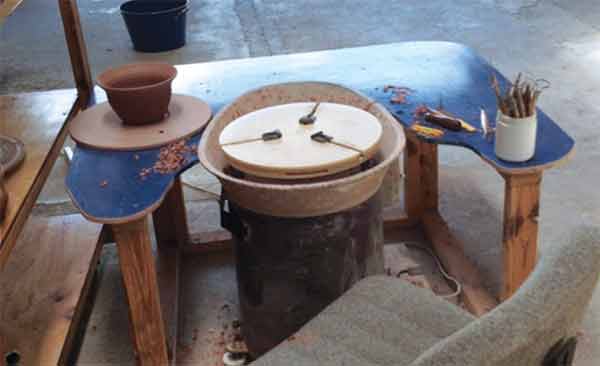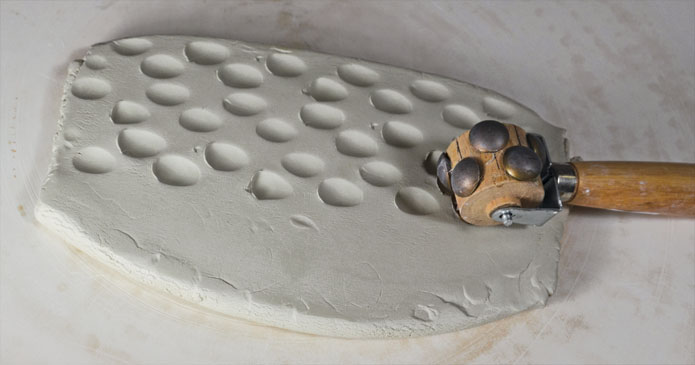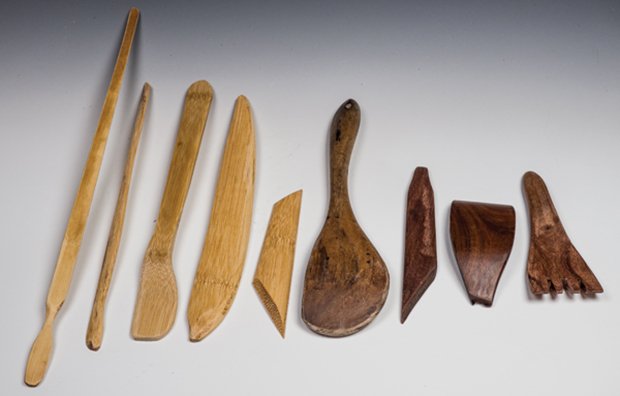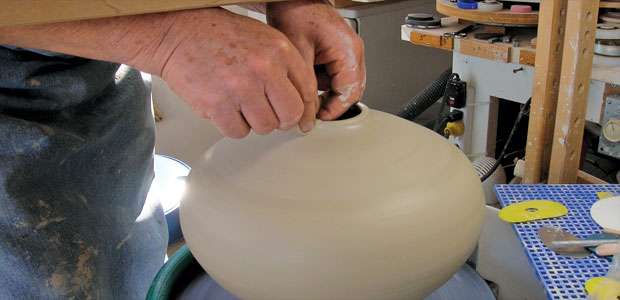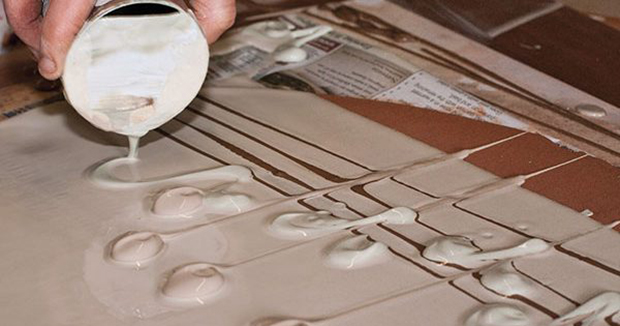

There are many different applicators that can be used to trail slip onto ceramic work—from store-bought slip trailers, to condiment containers, to hair-dye applicators. But I had never thought to trail slip with a tin can.
In today’s post, an excerpt from the Ceramics Monthly archive, Patia Davis explains how she uses an old tin can with some masking tape to slip trail beautiful designs! Pretty resourceful!
I work with both porcelain and earthenware clay bodies on the wheel, then apply wet slip, layer upon layer, through pouring, dripping, feathering, brushing, and trailing with a tin can. Here’s how I alter and use a can to create fluid, nature-inspired marks (1).
Use tape to cover all but two areas along the rim (see 2) of a clean can. I have tried several types of tape, but decorator’s masking tape works best to create the slit at the top of the tin can. The tape opening on the pouring edge of the rim is less than ⅛ inch (between 1–2 mm) wide, but this can vary depending on the thickness of the slip. The thicker the slip, the wider the opening in the tape can be. I use a mix of slip thicknesses, the thickest being similar to heavy cream.
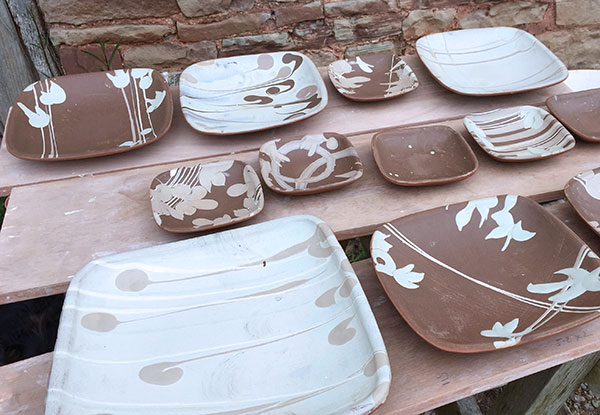

The opening at the back edge of the rim is wider than the pouring edge by about a centimeter or so, which allows air in so that slip can pour from the front opening. Only by trial and error can the balance between slip thickness and opening be worked out. The masking tape will need to be changed regularly as it slackens when wet, and the slip line becomes less defined.
Filling the Tin Can and Slip Trailing
Fill the can ¾ full with slip. Tip the can, bottom-end up to about a 45° angle from the pouring end, and hold it so that slip flows out of the narrower opening. This is a good starting point to get the slip to flow. I often allow the slip to nicely flow from the can at the right speed before moving over the wet slipped clay slab at speeds required for the intended mark (2). Speed and fluidity of movement determine the quality of mark your slip trailer will create—faster movements make thinner marks and slower movements make thicker marks. Quick moves of the wrist, when the can is at the right angle, can create fine, calligraphic marks. It has taken me plenty of practice time to get the flow rate and speed rate just right, in order to find the quality of mark that I am after.


